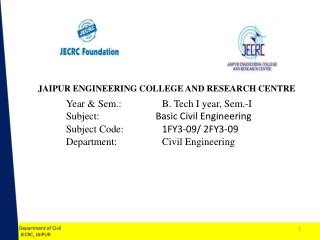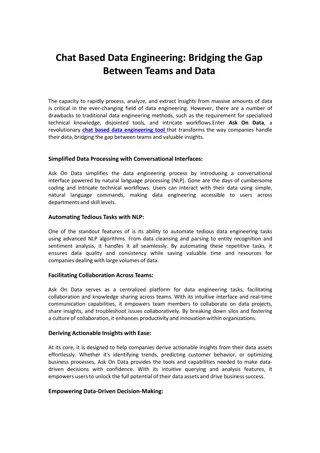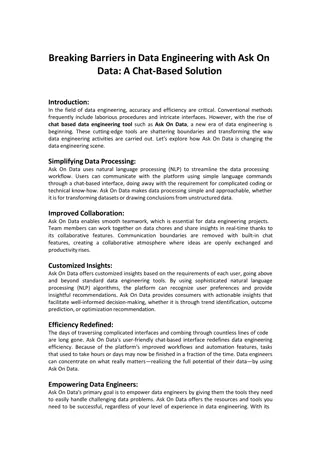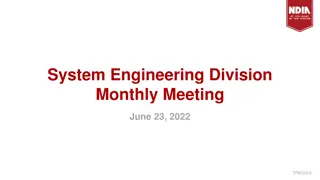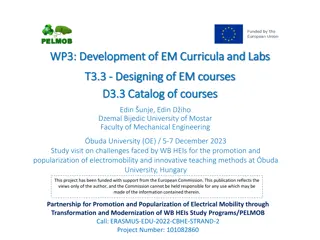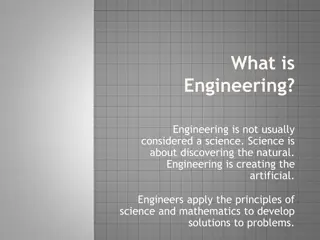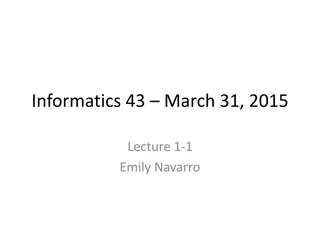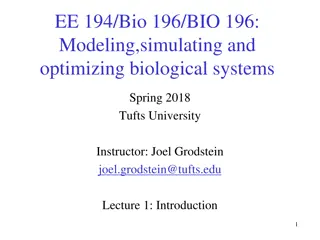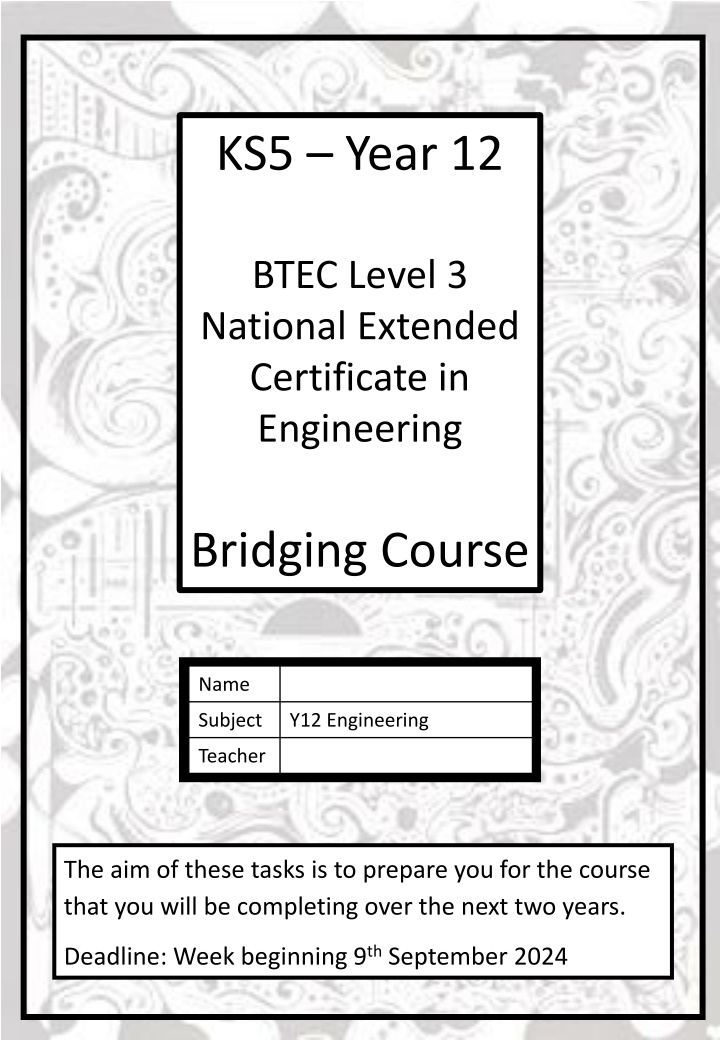
BTEC Level 3 Engineering Bridging Course Unit Tasks
Prepare for your BTEC Level 3 National Extended Certificate in Engineering with these tasks focusing on mathematics, physics, and electronics principles. Learn about engineering notations, equations, and more to excel in your studies.
Download Presentation

Please find below an Image/Link to download the presentation.
The content on the website is provided AS IS for your information and personal use only. It may not be sold, licensed, or shared on other websites without obtaining consent from the author. If you encounter any issues during the download, it is possible that the publisher has removed the file from their server.
You are allowed to download the files provided on this website for personal or commercial use, subject to the condition that they are used lawfully. All files are the property of their respective owners.
The content on the website is provided AS IS for your information and personal use only. It may not be sold, licensed, or shared on other websites without obtaining consent from the author.
E N D
Presentation Transcript
KS5 Year 12 BTEC Level 3 National Extended Certificate in Engineering Bridging Course Name Subject Y12 Engineering Teacher The aim of these tasks is to prepare you for the course that you will be completing over the next two years. Deadline: Week beginning 9th September 2024
BTEC Level 3 National Extended Certificate in Engineering Course Structure BTEC Engineering Extended Certificate 360 Guided Learning Hours (equivalent to 1 A-Level) 4 Units across 2 years 2 Externally Assessed Units Unit 1 2hr Formal Exam Unit 3 8hr Assessment under Exam Conditions 2 Internally Assessed Units Unit 2 & Unit 9 Controlled Assessment Units Delivered Unit 1 Engineering Principles - Learning to apply key mathematic and physics principles to engineering problems. Unit 2 Delivery of Engineering Processes as a Team - Planning and manufacturing an engineering product as a manufacturing team. Unit 3 Engineering Product Design and Manufacture - Identifying the key criteria for successful engineering design and producing appropriate design solutions and planning. Unit 9 Work Experience in the Engineering Sector - Carrying out a period of work experience at a chosen company to gain industry specific skills and experience.
BTEC Engineering Bridging Course - Unit Tasks Unit 1 - Engineering Principles (Mathematics) Mathematics and physics are a major part of all areas of life and are of particular importance in engineering. The mathematics and physics you will be asked to tackle in this course will be mostly based on practical issues in engineering. The standard of work will be at A Level standard but you will study a narrower range of topics. Task 1 In Engineering you regularly have to deal with very large or very small numbers. To make these easier to deal with engineering notation is used. (note that centi and deci are not commonly recommended engineering multipliers. Place these prefixes in order of size and include the multiplier they represent. (For example kilo means x1000, it is bigger than milli which means x0.001) tera mega milli giga micro kilo nano pico
BTEC Engineering Bridging Course - Unit Tasks Task 2 You will also be asked to work out values using equations. It is important that you can manipulate the equations (transpose) to allow you to calculate the value you want. e.g. The volume of a cylinder v is given by ? =4 Transpose the equation so you can calculate the radius if you know the volume. First Step ?3 = 4? taken to complete the task will vary depending on your previous experience. Continue until you are confident you can transpose the equation types shown. Transpose the following formulae to allow you to calculate v or v 1 ?1?1= ?2?2 ?1?1= ???1 ??3 3 Second step ?= The length of time 3? 33? 4? ?1?1 ?1 ? = ??2 ? = ??1 =?2?2 ?2 2 4 2= ?1 2+ 2?? ?1
BTEC Engineering Bridging Course - Unit Tasks Unit 1 Engineering Principles (Electronics) Many engineering projects depend on electronic devices as part of their operation. Both alternating current and direct current circuits are investigated. Three of the common rules applying to DC electronic circuits are resistors in parallel, resistors in series and Ohms law. The first 2 explain how to calculate equivalent resistances and the third describes the relationship between current, voltage and resistance. Task Using existing knowledge or by searching the BBC Bite-size site for information on Ohms law calculate the following: A 9V battery is used to power a circuit consisting of two 1K resistors in parallel. What is the current flow? A 9V battery is used to power a circuit consisting of two 1K resistors in series. What is the current flow? An LED has a working voltage of 2V and should be limited to a maximum current of 20mA. What is the theoretical value of the resistor needed if it is to be powered by a 9V battery? The LED above is to be used in a car. It will therefore be powered by a 12V battery. What theoretical value resistor will now be required?
BTEC Engineering Bridging Course - Unit Tasks Unit 1 Engineering Principles (Physics) Mathematics and physics are a major part of all areas of life and are of particular importance in engineering. The mathematics and physics you will be asked to tackle in this course will be mostly based on practical issues in engineering. The standard of work will be at A Level standard but you will study a narrower range of topics. Task 1 The diagram represents the tension forces acting on a single point in a structural framework. Calculate the magnitude and direction (from the horizontal) of the resultant force for the system of coplanar forces shown in the diagram. Magnitude Direction
BTEC Engineering Bridging Course - Unit Tasks Task 2 A dam is being built to retain water on the River Severn. The retaining wall for a dam is 10 m high and 5 m wide. Assume the density of water is 1000 kg/m3. Calculate the hydrostatic thrust on the dam.

